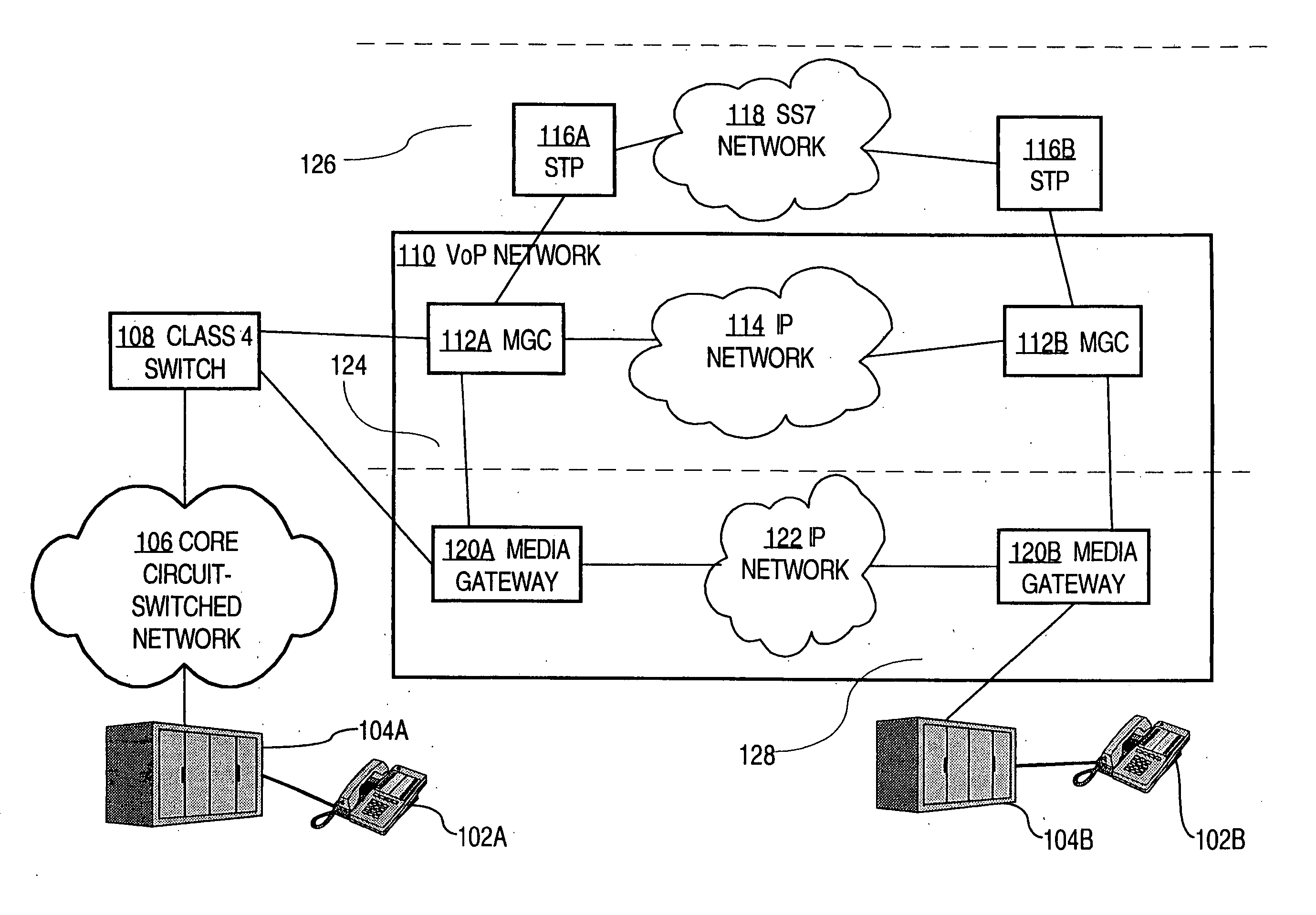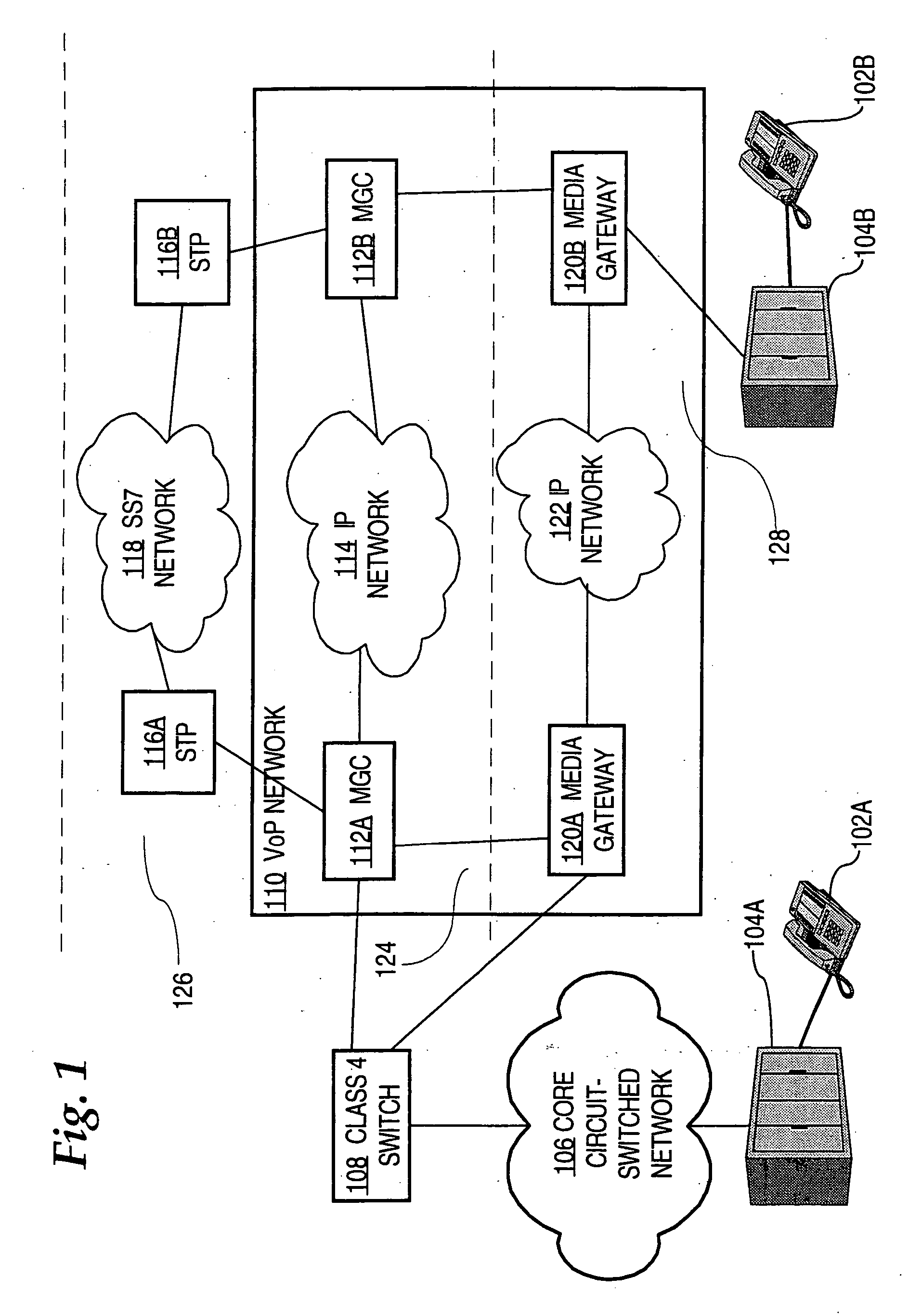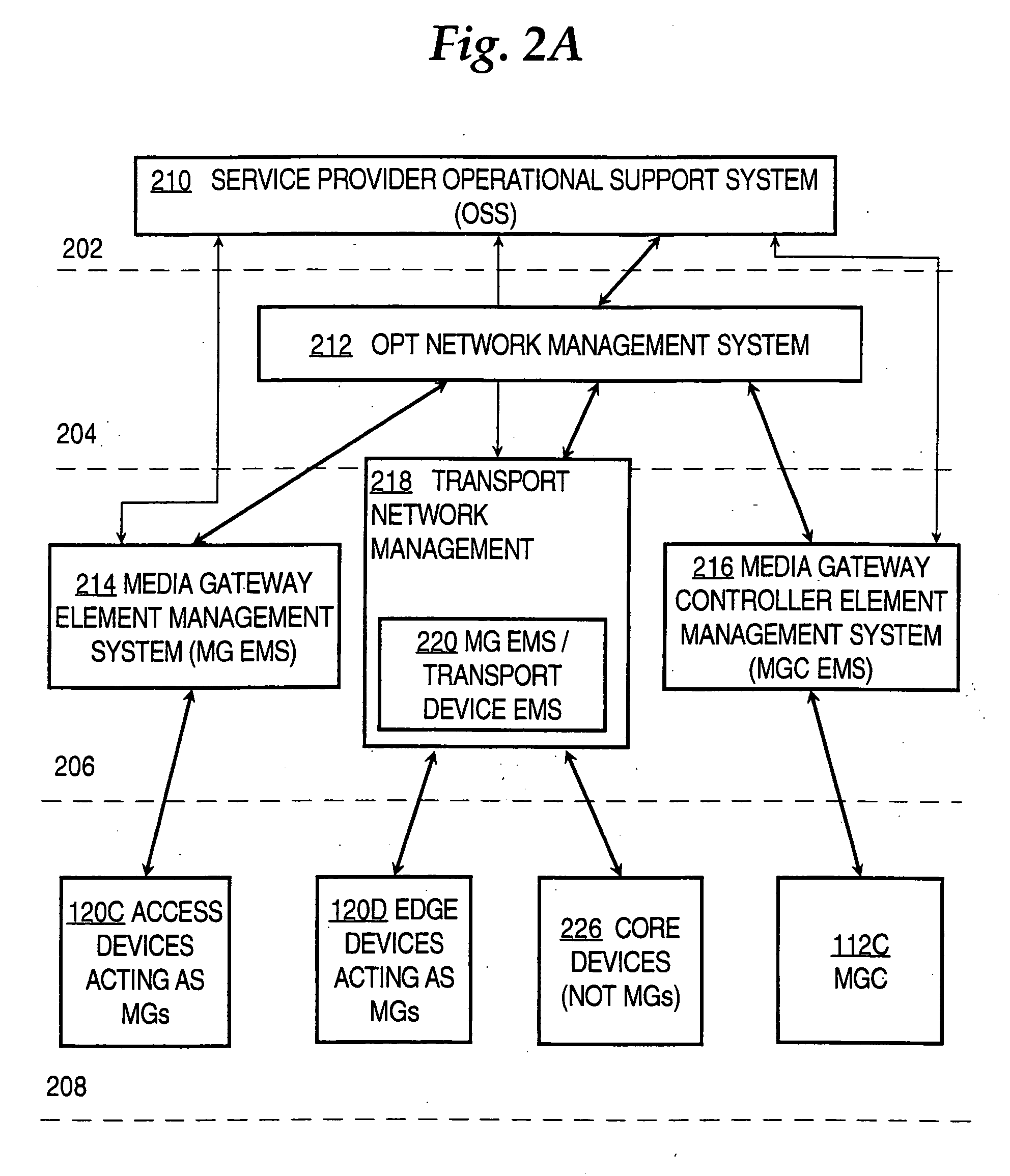Managing packet voice networks using a virtual switch approach
a virtual switch and packet voice technology, applied in data switching networks, program control, instruments, etc., can solve the problems of generating redundant alarms, complex management of opt networks, and complex devices
- Summary
- Abstract
- Description
- Claims
- Application Information
AI Technical Summary
Benefits of technology
Problems solved by technology
Method used
Image
Examples
Embodiment Construction
[0035] A method for managing packet voice networks using a virtual switch approach and abstract information model approach is described. In the following description, for the purposes of explanation, numerous specific details are set forth in order to provide a thorough understanding of the present invention. It will be apparent, however, to one skilled in the art that the present invention may be practiced without these specific details. In other instances, well-known structures and devices are shown in block diagram form in order to avoid unnecessarily obscuring the present invention.
[0036] For purposes of illustrating clear examples, the description herein generally relates to networks that are based on MGCP-type protocols. However, embodiments are not limited to such a context, and embodiments are applicable to H.323 and SIP-based networks. For example, embodiments described herein include a virtual switch useful with an OPT network based on the MGCP protocol are principally de...
PUM
 Login to View More
Login to View More Abstract
Description
Claims
Application Information
 Login to View More
Login to View More - R&D
- Intellectual Property
- Life Sciences
- Materials
- Tech Scout
- Unparalleled Data Quality
- Higher Quality Content
- 60% Fewer Hallucinations
Browse by: Latest US Patents, China's latest patents, Technical Efficacy Thesaurus, Application Domain, Technology Topic, Popular Technical Reports.
© 2025 PatSnap. All rights reserved.Legal|Privacy policy|Modern Slavery Act Transparency Statement|Sitemap|About US| Contact US: help@patsnap.com



